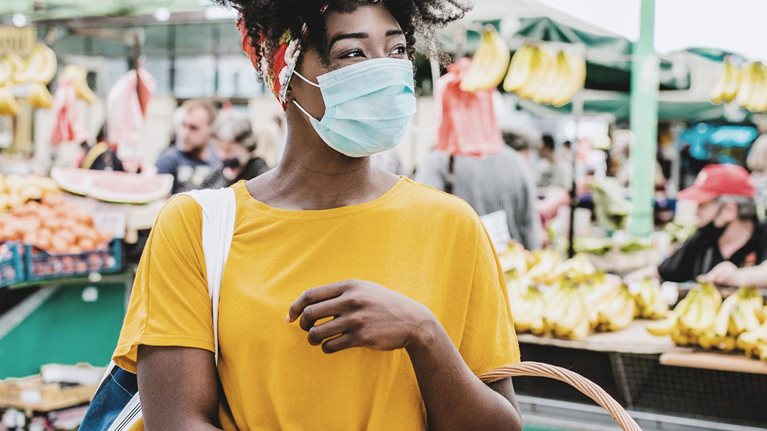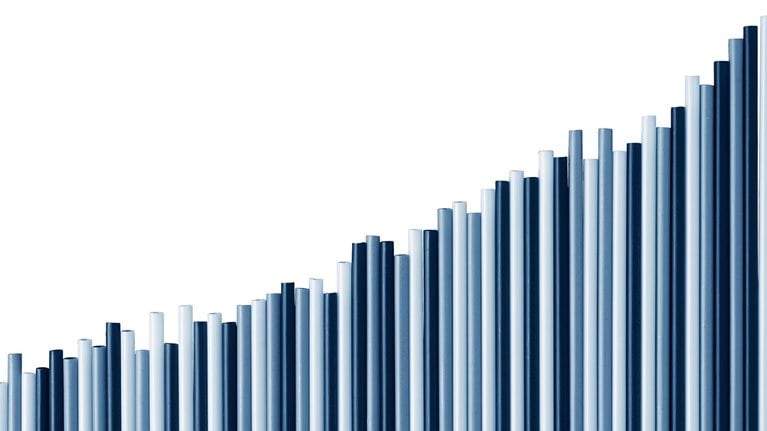The coronavirus outbreak is first and foremost a humanitarian crisis. As the situation evolves, the number-one priority for all companies must be the health and safety of employees and customers. At the same time, consumer-packaged-goods (CPG) leaders are facing an increasingly unpredictable and dynamic economic future, which will require thoughtful action to guide their business through the crisis.
Broadly, companies are focusing on three phases of action. The first is to navigate the now by safeguarding and protecting their employees, their customers, and the viability of their business.1 The second is to reorient the business so it can navigate the disruption and plan for the recovery. Finally, the most sophisticated companies are already positioning their business for the next normal after the crisis. Revenue growth management (RGM)—the discipline of driving sustainable, profitable growth through a range of strategies around assortment, promotions, trade management, and pricing—has an important role to play in phases two and three.
RGM strategies have traditionally allowed top performers to generate profits that they can reinvest in innovation and brand building. Sustaining this approach through the crisis will be a major challenge, as some categories have seen demand crater, and most consumers are bracing for a weak economic outlook. (Only 35 percent of US consumers were optimistic or very optimistic about economic conditions after COVID-19,2 and only 10 to 15 percent in Italy, France, Spain, and the UK.3)
Navigate the disruption
The crisis has affected consumer-goods companies in very different ways through changes in consumer behavior across several dimensions: category consumption, channel selection, shopper trip frequency, brand preference, and media consumption. (For an overview of these changes and their implications for demand, see Rapidly forecasting demand and adapting commercial strategies in a pandemic.)
These changes in consumer behavior require a new type of rapid planning, with a high level of uncertainty around the magnitude and duration of changes in consumer behavior. We recommend a “SPRINT” approach, which can be completed in four to six weeks (Exhibit 1).

The essence of the SPRINT model is to develop a view of the expected revenue and margin evolution of the business based on each category-level demand archetype, and then to design appropriate actions across multiple commercial dimensions. The SPRINT model is comprehensively laid out in Rapidly forecasting demand and adapting commercial strategies in a pandemic. We focus here on the RGM component in step 5 (‘N’):
Navigate RGM adjustments with caution. Coupled with supply realities, any demand spikes or dropoffs will create opportunities and challenges for CPGs. With respect to the four core aspects of RGM (pricing, promotions, assortment and portfolio, and trade), companies need to tread carefully. Any action on RGM should abide by the principle of building stronger relationships with customers and consumers (for example, by extending payment terms for more vulnerable customers or by delaying planned price increases on essentials). At the same time, there will be value-driving actions to take (Exhibit 2).

Would you like to learn more about our Marketing & Sales Practice?
Plan for the next normal
Even as companies work nonstop to stabilize their business, we believe it is critical to allocate significant time to planning for the postcrisis phase. It can be as simple as executives spending a few hours every week thinking ahead, or as committed as assigning a specific team responsibility for creating RGM plans for 2021 and beyond. To succeed at RGM in the next normal, CPG companies need to focus on consumers, shoppers, and customers, and define scenarios for each.
Consumers
Product and brand preferences—leading to assortment and pricing changes
Stockpiling and product unavailability are disrupting consumers’ traditional preferences for specific brands or product attributes, especially in categories deemed essential. As a result, 30 to 40 percent of US consumers and 65 to 75 percent of those in India and Vietnam have already tried alternative brands or products during COVID-19.4 The expected postcrisis recession is likely to exacerbate this trend as consumers look for and switch to more affordable options.
To respond, CPGs will need to make assortment and pricing changes:
- Re-evaluate portfolio positioning and pack-price architecture, and consider whether to change the pricing for certain SKUs or launch new packs that are more affordable or convenient. One coffee-subscription company saw growing consumer demand for its home-delivered coffee and made a five-pound pack, normally reserved for wholesale, available to end consumers online, which was an instant hit.5
- Consider whether they need new sub-brands with a differentiated proposition, specifically as an affordability play or to fulfill needs that matter more to consumers post-COVID-19.
- Consider whether to invest in a specific growth category through innovation or M&A. As an example, many manufacturers of beauty and personal-care products have started to produce alcohol gels to support health workers and their communities. Now, with increased demand for hygiene products, should these become part of their standard offering?
- Address health concerns, in particular hygiene-conscious packaging. Examples are beverage companies adding aluminum-foil tops on cans or fresh-food producers packing products. Notably, these changes will also need to align with consumers’ rising standards on sustainability.
Consumption occasions—leading to assortment and promotions changes
The shift to at-home consumption may become structural as consumer habits around working from home or spending social time outside change. Since the impact would vary by category, consumer-goods companies need to have a clear understanding of this evolution by holding new consumer-usage panels more frequently or using new household-penetration data in more detail.
Early evidence from China also suggests that some of the consumption occasions most impacted by COVID-19 are not likely to return quickly to precrisis levels, and recovery is not uniform across the country. In Tier-1 cities, sales in restaurants and food service in early March (with reopening rates above 90 percent) were still 40 percent lower than in December 2019.6
CPG companies will need to leverage these insights to develop new occasion-led assortment and promotion strategy changes. If occasion insights are not yet a significant input to activation and innovation strategy, now may be the time to bring them forward. This can lead to developing products better suited to new or more important occasions, reallocating communication investment toward them, and improving the activation of products to match the occasions. Several wine companies, for example, have started to offer virtual educational wine tastings, with complimentary at-home delivery.
Would you like to learn more about Periscope by McKinsey?
Shoppers
Shopping occasions / missions—leading to promotions changes
Stock-up missions in grocery retail significantly increased during the initial crisis and may continue to be more functional, shorter, fewer in number, and higher in ticket value. In addition, the shopper may change: in China, male shoppers at brick-and-mortar stores increased more than 50 percent during the crisis.7
With consumers spending less time in stores, space for second placements is potentially restricted due to social distancing and a changing shopper profile. CPG companies need to redesign their promotional plans and reallocate budgets, including stimulating new-promotion volume uplifts, returns on investment, and reflecting changes in the assortment focus.
Channel and store preferences—leading to assortment and trade management changes
Shoppers are trying new ways of shopping and many may stick with them, leading to dramatic channel shifts:
- E-commerce is growing, albeit at vastly different speeds in different places. US grocery e-commerce household penetration increased from 13 percent before the pandemic to more than 31 percent in late March.8 This acceleration is likely to remain to some extent after lockdowns are over, with consumers in Asia expecting to shop online significantly more after the crisis than they did before: +15 percent in China, +16 percent in Indonesia, +38 percent in India, and +47 percent in Vietnam.9
- Bricks-and-mortar retail is seeing a substantial change in store mix and shopper experience. For example, in Europe, 14 percent of shoppers switched to a discount store, and in the US, 17 percent of shoppers were already going to new stores during the COVID-19 situation. In China, 50 percent of shoppers who had changed stores reported they do not intend to shift back.10
Various data sources and analysis techniques can help CPGs monitor these shopping habits very closely. For example, shopper surveys and geospatial-location data can shed light on how shopping behaviors and missions are changing—and given how fast the crisis is evolving, weekly or monthly updates are desirable.
Companies should start positioning themselves now to succeed by:
- accelerating efforts to win in growing purchasing channels such as e-commerce and click & collect, including expanding e-category management capabilities and providing easy-to-handle, e-commerce-specific packaging. A consumer products brand, for example, refocused its promotional budget on its own website, offering over 50 percent discounts to match customers’ changes in channel focus.
- ensuring sufficient product availability and distribution of a “must-have assortment” across all store types. Companies could also consider having a presence in the discount channel, provided they carefully assess the tradeoffs of such a move.

Rapid Revenue Recovery: A road map for post-COVID-19 growth
Customers—leading to trade-management changes
In light of the changes to channel and store preferences described above, CPG companies will need to focus efforts with customers along four dimensions:
Strengthen operational relationships to ensure the basics are in place—for example, ensuring an effective supply chain to make sure there is always stock.
Support customers who may be under critical pressures—this can include extending payment terms or temporarily enabling consignment-based selling models. For example, an alcoholic-beverage company is encouraging outlet consumers to buy gift cards that can be redeemed later, helping to protect one of its core channels.
Reassess focus of investments across customers, given likely changes in the channel landscape, and who are going to be the “new winners.” CPG companies will need to redefine their customer segmentation and purposefully tie investment amounts, components, and size to the new segmentation.
Redefine trade-terms agreements with retailers, as they are being disrupted by changes in shopper habits and preferences. This will include changes to:
- promotion plans—as noted above, promotional uplifts and returns are likely to fundamentally change, and CPG companies will need to reset promotional plans agreed with retailers, redefining terms, in particular fixed-sum payments.
- growth bonus thresholds—as shoppers spend more on essentials and less on discretionary items, growth thresholds may be arbitrarily hit or become completely out of reach.
- timing of annual negotiations—negotiations between CPGs and retailers typically start gearing up at the end of Q3 and accelerate in Q4. However, in light of the crisis, CPGs may want to delay negotiations until they have more clarity on what the next normal looks like, negotiate different components at different times, or agree to more flexible terms. At all times, companies should avoid being locked into a contract that has not been adjusted for the new reality.
There is no playbook for navigating a global pandemic, and there are shifts that will be hard to anticipate. But experience shows that companies that take a proactive approach, repositioning themselves to navigate the disruption and planning ahead for the post-crisis world as best they can, stand the best chance of not only surviving but coming out on the other side stronger. Companies that already have a dedicated RGM function should be putting that capability at the forefront of their effort. The actions they help direct should deliver for consumers and shoppers and strengthen relationships with key customers.


